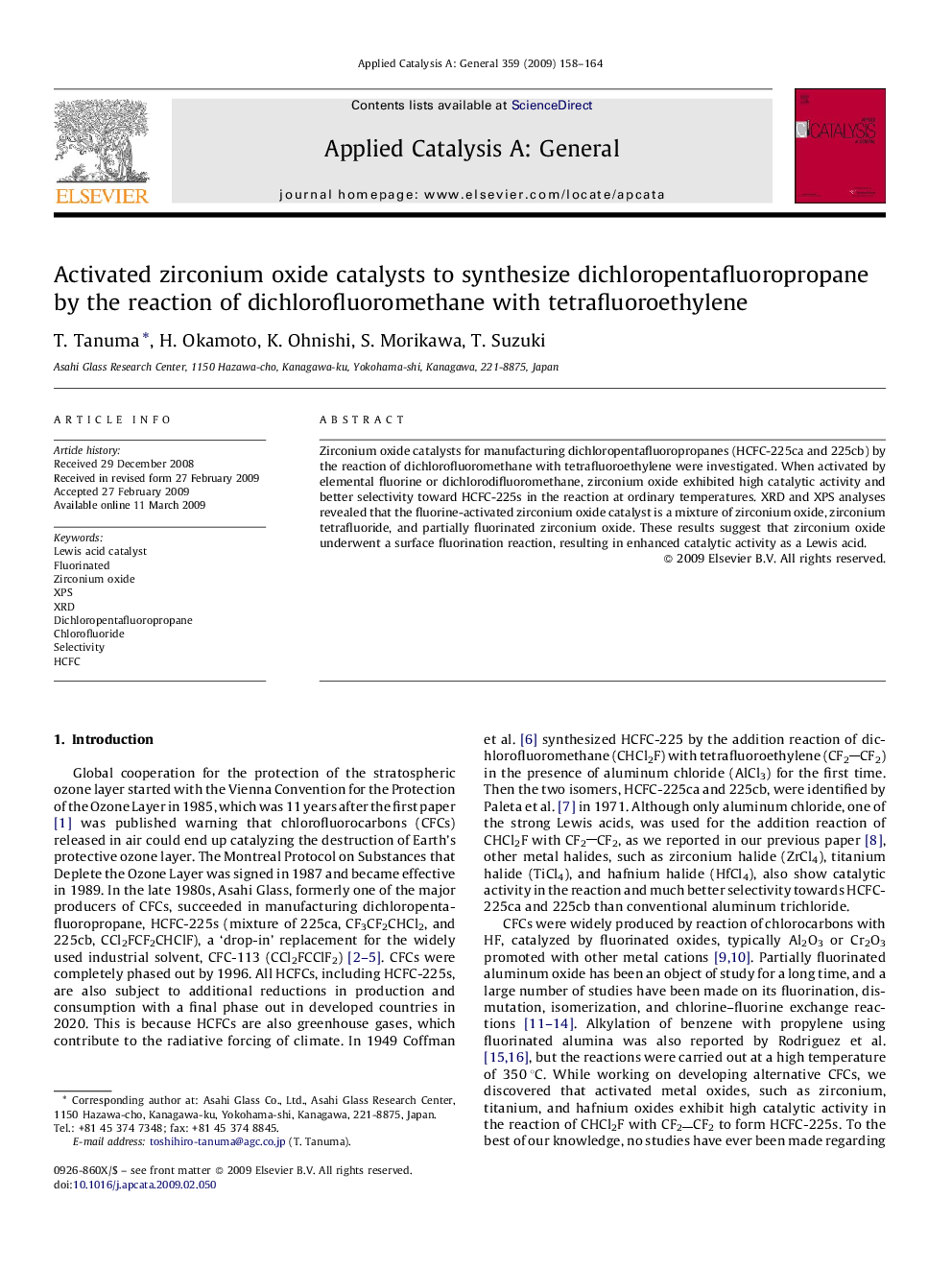| Article ID | Journal | Published Year | Pages | File Type |
|---|---|---|---|---|
| 42533 | Applied Catalysis A: General | 2009 | 7 Pages |
Zirconium oxide catalysts for manufacturing dichloropentafluoropropanes (HCFC-225ca and 225cb) by the reaction of dichlorofluoromethane with tetrafluoroethylene were investigated. When activated by elemental fluorine or dichlorodifluoromethane, zirconium oxide exhibited high catalytic activity and better selectivity toward HCFC-225s in the reaction at ordinary temperatures. XRD and XPS analyses revealed that the fluorine-activated zirconium oxide catalyst is a mixture of zirconium oxide, zirconium tetrafluoride, and partially fluorinated zirconium oxide. These results suggest that zirconium oxide underwent a surface fluorination reaction, resulting in enhanced catalytic activity as a Lewis acid.
Graphical abstractDichloropentafluoropropanes (HCFC-225s) were synthesized by the reaction of dichlorofluoromethane with tetrafluoroethylene using activated zirconium oxide catalysts at ordinary temperatures. XRD and XPS analyses revealed that the fluorine-activated zirconium oxide catalyst is a mixture of zirconium oxide, zirconium tetrafluoride, and partially fluorinated zirconium oxide. CCl2F2-activated zirconium oxide and zirconium chlorofluoride catalysts were compared by studying the reaction kinetics.Figure optionsDownload full-size imageDownload as PowerPoint slide
